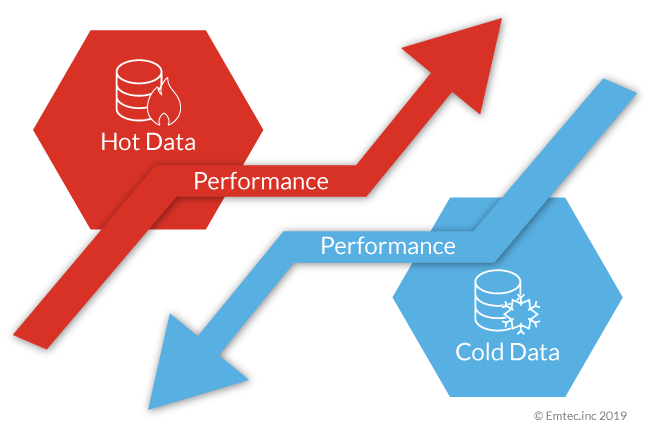05.08.19 By Nandakumar Sivaraman

We are witnessing tectonic shifts in technology patterns, and with this digital disruption enterprises are adopting digital transformation for a competitive edge. Many new platforms have emerged as part of Intelligent automation—Internet of Things, Artificial Intelligence, Machine Learning, and Robotic Process Automation — enriching transformation opportunities as well as generating an ever-expanding volume of Data.Extensive digital transformation is not just about data, but the intelligent management and utilization of said data throughout the enterprise. When it comes to digital transformation strategies and initiatives, every organizational decision is data-driven. Knowing how to manage your data over time is therefore quite imperative.
Hot vs. Cold Data
So, how long does data remain relevant? The truth is, some data will lose value over time. Data needs to, therefore, be evaluated periodically for importance and sorted accordingly. Evaluation is generally based on how often you need it, its value and what temperature it is. Data can be categorized as “hot” or “cold” (and sometimes even warm).

In simplest terms, historical data is data collected from sources (emails, press releases, documentation, etc.) involving past events and situations. Enterprises use technology and expertise to collect historical data to identify different patterns and develop models to predict future trends.
For example, in supply chain management, each product subscription goes through various stages during the pre and post-sale process. All processes of inventory, product pricing, and order information goes through various transformations periodically and reach the stage where data is categorized based on accessibility, value, and requirement and stored as hot or cold data.
Enterprises can make a positive impact to their service offerings over time by gaining access to and analyzing this historical data to understand its customers better. In historical data, anything older than 6 months is generally considered cold data and anything more recent is considered hot data. For example, if a customer is regularly completing transactions (a strategic customer), and they are not getting orders on time, the organization will have immediate visibility to this and can take necessary actions to improve delivery time.
If historical data is stored for a significant amount of time—the enterprise can make decisions about data categorization (hot and cold) based on the factors discussed above. Categorization is quite dependent on a client’s personal business. There are instances where any data generated before 2 years or prior is treated as cold and anything more recent is considered as hot data. Since data storage requires resources to maintain data life cycle management, it is essential that data is stored optimally and disposed of when not needed.
Data and data analytics is at the core of strategic decision-making. Insights gleaned through a historical data analysis can be leveraged in rational decisions. Let’s look at the steps towards developing a data-driven decision-making process: .
Some of the key benefits from above process are:
Utilizing historical data for meaningful insights brings more informed decision making across the organization. Data is pervasive but the process and skillsets to analyze the right data sets for tangible insight is where many firms need support. Bridgenext’s Big Data consulting team can help. Contact us to solve your “big data” problems with powerful insights.